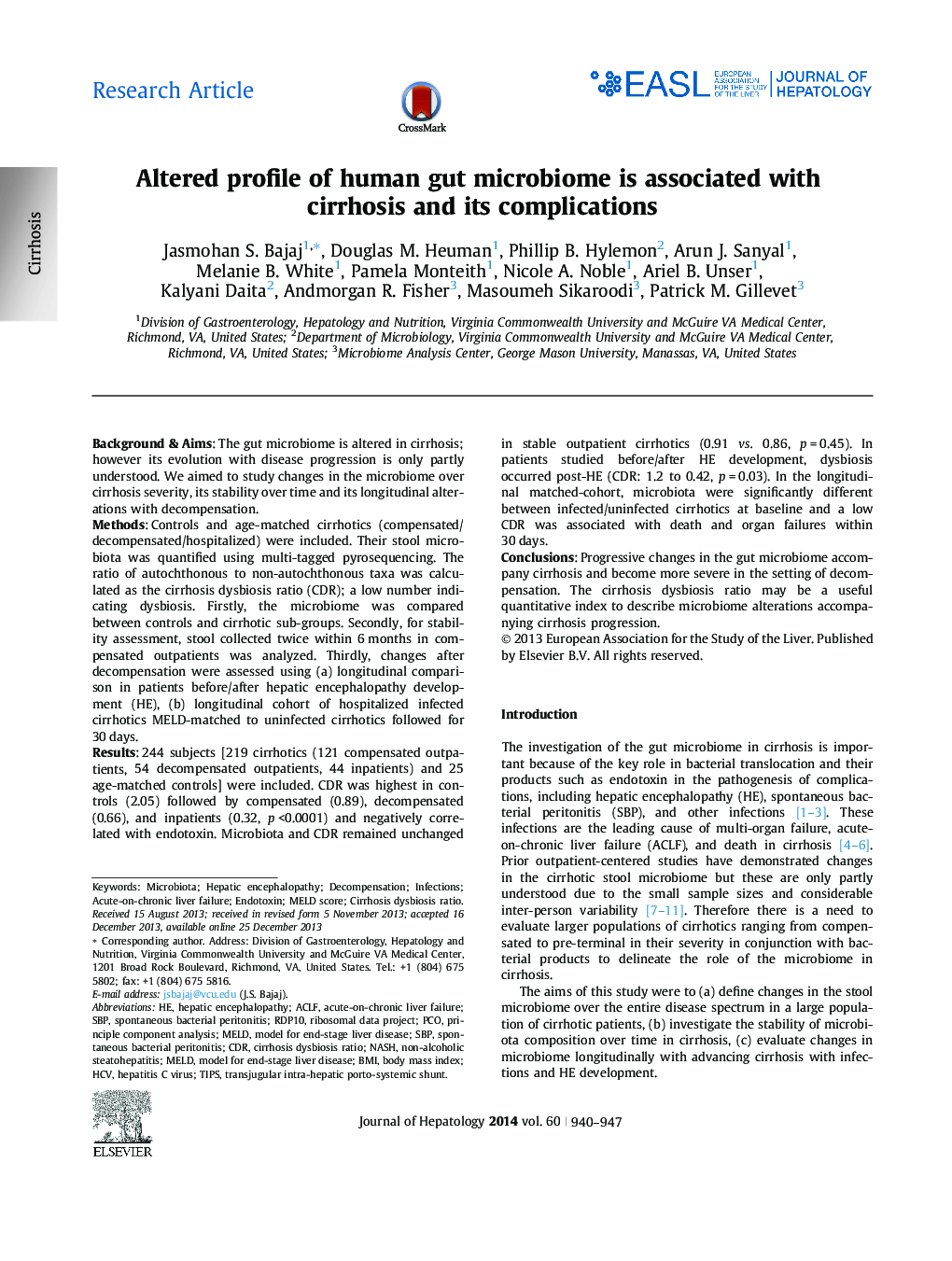| کد مقاله | کد نشریه | سال انتشار | مقاله انگلیسی | نسخه تمام متن |
|---|---|---|---|---|
| 6103569 | 1211130 | 2014 | 8 صفحه PDF | دانلود رایگان |
Background & AimsThe gut microbiome is altered in cirrhosis; however its evolution with disease progression is only partly understood. We aimed to study changes in the microbiome over cirrhosis severity, its stability over time and its longitudinal alterations with decompensation.MethodsControls and age-matched cirrhotics (compensated/decompensated/hospitalized) were included. Their stool microbiota was quantified using multi-tagged pyrosequencing. The ratio of autochthonous to non-autochthonous taxa was calculated as the cirrhosis dysbiosis ratio (CDR); a low number indicating dysbiosis. Firstly, the microbiome was compared between controls and cirrhotic sub-groups. Secondly, for stability assessment, stool collected twice within 6 months in compensated outpatients was analyzed. Thirdly, changes after decompensation were assessed using (a) longitudinal comparison in patients before/after hepatic encephalopathy development (HE), (b) longitudinal cohort of hospitalized infected cirrhotics MELD-matched to uninfected cirrhotics followed for 30 days.Results244 subjects [219 cirrhotics (121 compensated outpatients, 54 decompensated outpatients, 44 inpatients) and 25 age-matched controls] were included. CDR was highest in controls (2.05) followed by compensated (0.89), decompensated (0.66), and inpatients (0.32, p <0.0001) and negatively correlated with endotoxin. Microbiota and CDR remained unchanged in stable outpatient cirrhotics (0.91 vs. 0.86, p = 0.45). In patients studied before/after HE development, dysbiosis occurred post-HE (CDR: 1.2 to 0.42, p = 0.03). In the longitudinal matched-cohort, microbiota were significantly different between infected/uninfected cirrhotics at baseline and a low CDR was associated with death and organ failures within 30 days.ConclusionsProgressive changes in the gut microbiome accompany cirrhosis and become more severe in the setting of decompensation. The cirrhosis dysbiosis ratio may be a useful quantitative index to describe microbiome alterations accompanying cirrhosis progression.
Journal: Journal of Hepatology - Volume 60, Issue 5, May 2014, Pages 940-947
